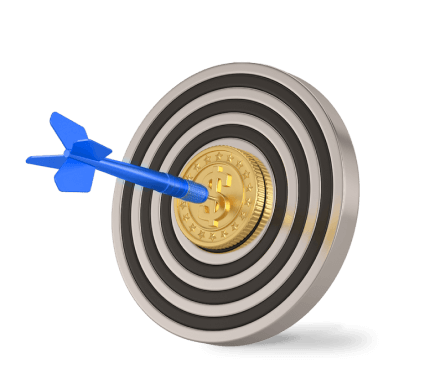
The Difference Between Trading and Investing

One of the most fundamental distinctions in the financial world is between traders and investors. For those new to the financial markets, the difference between these two can seem like an arbitrary one – surely both are just a way of profiting from changes in the price of assets?
Well, yes. But there is far more to both trading and investing than just putting money behind a particular company. Investors and traders take fundamentally different views of the stock market, and seek to achieve different outcomes for themselves and their clients.
The basic distinction can be put simply – investors seek larger returns over an extended period through buying and holding. Traders, by contrast, take advantage of both rising and falling markets to enter and exit positions over a shorter time frame, taking smaller, more frequent profits.
Behind this simple explanation is a great deal of complexity, however. In this article, we’ll look at both investing and trading, and how you can combine both to get the most out of your investments.
What Is Investing?
The goal of investing is to gradually build wealth. Investors generally take a long-term view of the financial markets, and are interested in the performance and stability of shares over the course of years, decades, or even centuries. Successful investors are those that can reliably take an initial sum of money, and ensure that this will be worth more than it was initially decades from now, even given inflation and cyclical stock market fluctuations.
In order to achieve this, investors use a variety of techniques and tools. They will aim to take full advantage of financial concepts that can take years to pay off – such as compound interest, dividends, and stock splits. If a stock or other investment drops in value, as is inevitable with any type of financial speculation, they will typically hold on to it anyway and attempt to “ride out” what they hope will be short-term volatility.
Investors value companies for far more than just their share price. They will look at what are regarded as more “fundamental” indications of value, such as price-to-earnings ratios and management forecasts.
Most people will be most familiar with investing because of their pension. Money you invest in your pension is generally managed by investors, who look to maximize your gains over the long-term, while also avoiding undue risk. But, though this money is certainly traded on the stock market, it is not used for “trading”, which in this context means something quite different.
What Is Trading?
Traders and investors work in the same financial markets, and sometimes buy and sell the same stocks, shares, and other investment vehicles. However, traders take a much shorter-term view of the financial markets than investors.
Trading is all about maximizing short-term gains. This can be pursued via the buying and selling of stocks, commodities, currency pairs, or other instruments. The goal is to generate returns that outperform buy-and-hold investing. While investors may be content with annual returns of 10% to 15%, traders might seek a 10% return each month.
This focus on short-term gains means that there is a simple math involved in trading – buy low and sell high, or “short” a stock to profit from it dropping in value. Traders must move very fast, and stay flexible when it comes to their portfolio, so that they can adapt to quickly-changing market conditions.
Traders tend to make more use of technology than buy-and-hold investors. They will use software analysis tools to find stocks that will rise in value shortly, and will even employ systems that automatically buy and sell stock when it reaches a particular price.
There are several types of trader, and they may be distinguished by how long they tend to hold positions for:
- Position Trader: Positions are held from months to years.
- Swing Trader: Positions are held from days to weeks.
- Day Trader: Positions are held throughout the day only with no overnight positions.
- Scalp Trader: Positions are held for seconds to minutes with no overnight positions.
In practice, most traders employ a mixture of these approaches, holding some options for weeks or months at a time, and others for mere hours. But whatever their strategy, traders are after the same thing – short-term gains.
Combining Approaches
Today, it’s easier than ever for individuals to take advantage of the financial markets, and a range of apps and other platforms have risen up that aim to make this as easy as possible – Wealthface among them.
For most individuals, the best approach will be to combine investing and trading. If you are looking to build long-term wealth, for instance, you should make sure that a significant part of your portfolio is made up of long-term, hold-and-wait stocks and shares. This is the most reliable, low-risk way of making sure you have a comfortable retirement.
You shouldn’t ignore the short-term gains that can be made trading, though. Trying your hand at trading is a great way of learning about the financial markets, and can hone your ability to spot a great investment. Just be aware that trading is generally a high-risk business, and so you should be prepared to lose your money should the worst happen.
The Bottom Line
Understanding the difference between trading and investing is very important for anyone looking to make money from the financial markets. Most people will get the most out of the markets if they combine investing and trading – combining short-term speculation with long-term, steady growth.
But in order to achieve that balance, you should make sure that you understand how each approach works, and the tools you need to make it work. In general, we recommend an investing approach for passive investors who aren’t very financially literate, and trading for expert investors.




